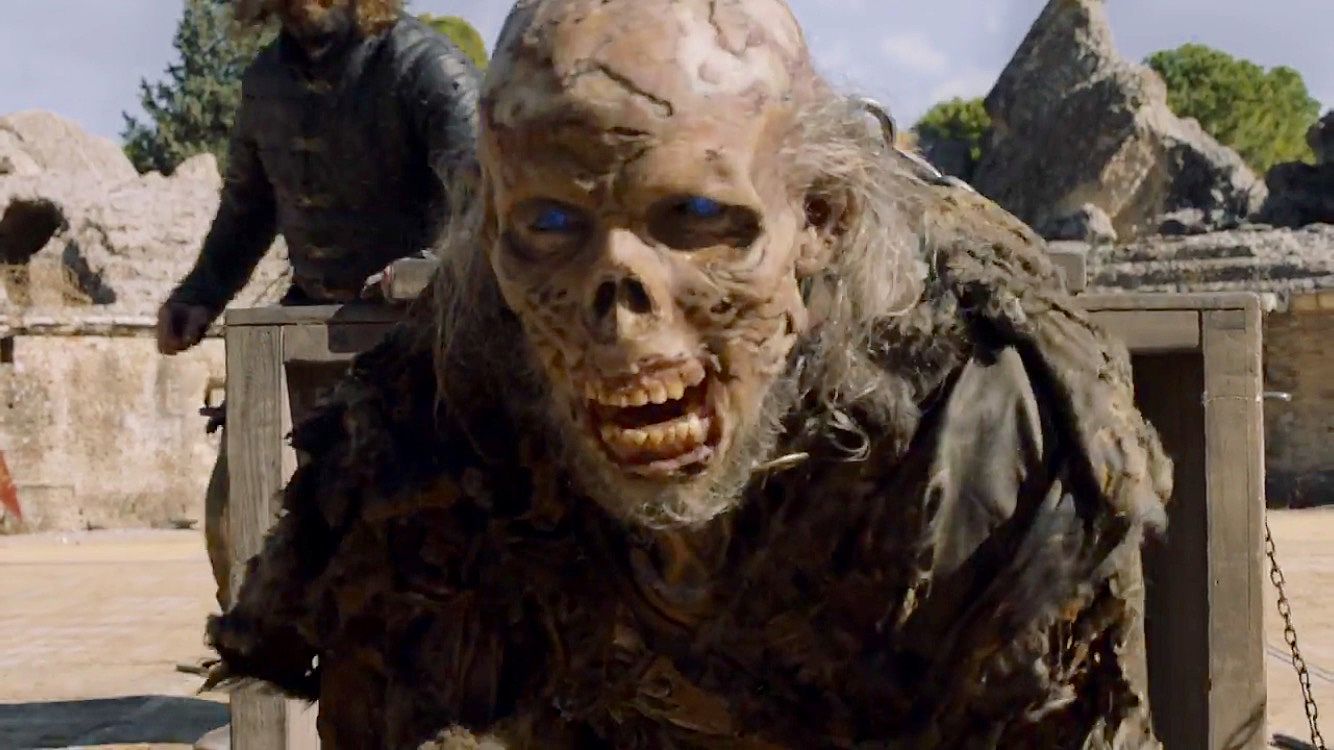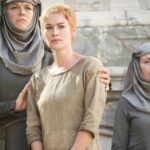What was the best death scene from Game of Thrones season 7? Read our takes, tell us yours, and vote in our poll! The Small Council is in session.
RAZOR: I’ll get things started with the most O.G. way to go out on Game of Thrones to date: the baller death of the Queen of Thorns herself, Lady Olenna Tyrell.
In the season 6 finale, we saw Cersei Lannister all but extinguish House Tyrell. In fact, on the show, Lady Olenna is the sole surviving Tyrell, and because she is seeking revenge, she backs Daenerys Targaryen’s bid to take the Iron Throne in season 7.
Thinking the Lannisters would attack Casterly Rock, Lady Olenna returned to Highgarden, sans the protection of three large dragons, a bunch of burly Dothraki, and the army of Unsullied. Instead, Jaime and his army — which includes a few of Olenna’s own bannermen — attacked Highgarden, intending to strike a blow against Daenerys by taking out one of her major supporters.
Once the Tyrell forces were defeated, Jaime enters the room where Olenna has been waiting. The two exchange respectful pleasantries and then get down to the business of Olenna’s death. According to Jaime, Cersei wanted the Queen of Thorns dragged through the streets of King’s Landing, but Jaime persuaded her to go with poison instead.
Jaime pours a glass of wine and adds the poison. Without hesitating, Olenna gulps it down, then drops arguably the best lines of season 7.
I’d hate to die like your son. Clawing at my neck, foam and bile spilling from my mouth. Eyes blood-red, skin purple. Must have been horrible for you, as a Kingsguard, as a father. It was horrible enough for me. A shocking scene. Not at all what I intended. You see, I’d never seen the poison work before. Tell Cersei. I want her to know it was me.
The death spawned some excellent memes and YouTube videos. Let’s enjoy the best of the best.
DAN: I’ve gotta give my nod to another scene from “The Queen’s Justice”: the moment in the Red Keep dungeons when Cersei, drunk on righteous vengeance and probably also wine, gives the kiss of death to Tyene Sand, and then leaves so Ellaria can watch her daughter die and decay.
Like Olenna’s death, the show keeps this bit simple — it’s just actors in a room, walking and talking. The interesting thing about this particular death scene is that, of the several people involved, the person who ends up dying — Tyene Sand — isn’t the focus. She’s maybe the third most important person there. The most important is Cersei, who stalks back and forth across the room like a cat about to pounce on a mouse, rarely raising her voice above a soft coo, oozing deadly sweetness. Not for the first time, I wonder how Lena Headey has managed to go this long without getting an Emmy.
But she’s not just camping it up. Cersei is driven by deep pain, pain that surfaces most clearly when she asks Ellaria, point blank, why she killed Myrcella. Indira Varma, whose character was underwritten at the best of times and baffling at the worst, does a splendid job of suggesting Ellaria’s hidden depths, whether she’s defiant in the face of impossible odds or crumbling when it becomes clear that her daughter is going to die slowly, and that she’s going to watch. I don’t know if the writers did it on purpose, but taking away Ellaria and Tyene’s ability to speak did wonders for their characters.
And as Sarah pointed out in last week’s Small Council, Cersei’s scheme is so spectacularly cruel that we actually feel something for these women despite how spotty their plotline has been. The final image, of Ellaria and Tyene trying and failing to touch each other on account of their chains, is effectively chilling. If you’ve gotta go out, go out big.
BROOKE: First, I have to bow down to Dan for the wordsmith that he is. That being said, I loved the death of the Sand Snakes, Obara and Nymeria, because…good riddance. Like Lady Olenna, I was always hoping for them to shut up, never more so than when they were sailing towards Dorne in “Stormborn,” languishing in their hammocks and whining “mama, mama” like suckling pigs.
Maybe the parts were underwritten, maybe the actors weren’t up to snuff (probably not, because I’m sure Keisha Castle-Hughes (Obara) and Jessica Henwick (Nymeria) beat out legions of actors for the parts), but the Sand Snakes never evolved past a collective snarl. They were interchangeable in their aggression, unamusing in their attempts at levity, and tiresome in their overconfidence. Like Oberyn, they could wield a spear, but until Season 7’s sea battle, they had bested their enemies with subterfuge (the Long Farewell with Bronn, cornering Trystane Martell on the ship to King’s Landing). The Sand Snakes made their bones on manipulation and trading on people’s weaknesses. Whatever victories they had were shady, sneaky and easy.
When it came time for a real battle they were quickly dispatched, and it was AWESOME, because they deserved it. It’s always a pleasure to see the Dornish spear-play, and even though Obara and Nymeria put up a good fight, it wasn’t enough.
So RIP Obara and Nymeria Sand. You won’t be missed, but you found a better death than Tyene and Ellaria; at least yours was quick.
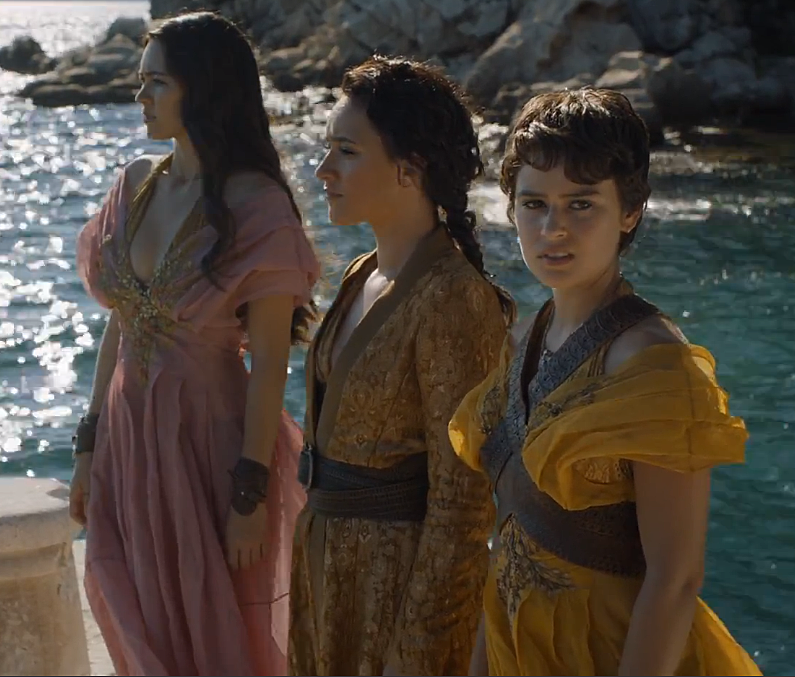
The treacherous Sand Snakes–good riddance.
RICHARD: Good choices, all. I’m gonna take the outlier road and nominate the demise of Biff the Wight (also known as Larry), who died in the Dragonpit of King’s Landing.
Why select Biff, the anonymous, ugly, unlovable, undead guy who was butchered so callously to prove a point to Cersei? Because his brutal destruction — a savage monster torn to pieces in an arena — speaks to an interesting storytelling conceit in fantasy that imitates a horrible aspect of human psychology.
Think of the Night King’s undead army, or even the hordes of zombies in a show like The Walking Dead. The bodies are mere shells animated by terrible magic or mysterious biology. The souls which once inhabited them are gone. It’s easy to mow down these disgusting, dangerous masses with dragonfire, swords and shotguns because they aren’t really people. You don’t feel bad when you kill them. There’s so many of them it’s like stomping ants. And it isn’t murder—they’re already dead.
Soviet dictator Joseph Stalin, who murdered tens of millions of his own people, once said: “If only one man dies of hunger, that is a tragedy. If millions die, that’s only statistics.”
Shrieking Biff is selected from the faceless horde. His story is unknown to us. He represents two things to the still-living human characters: the looming White Walker menace and the awful prospect of zombified death. The spectacle of his destruction in the brilliant Dragonpit scene is effective. He’s allowed to appear threatening to Cersei. He’s hacked to bits to illustrate how hard it is to kill a wight. Humorously, Qyburn is fascinated with his severed arm.
It’s easy to slice and dice Biff because we and the characters don’t know him. But he was once a living man, perhaps with a wife and children, perhaps something of a hero with an amazing story to tell. Still, it’s difficult to feel attached to his rotting corpse because we didn’t know who he was before. Let me put it this way: what if Jon and company had somehow managed to snatch the undead Karsi (the Wildling mother who fell at Hardhome), or, even more poignantly, an undead Hodor? Put wight-Hodor in Biff’s place in the Dragonpit scene and everything changes: it would have been incredibly distressing to watch. Heck, as a viewer it would have been unbearable.
But why? Hodor is long gone. What comes out of that box, whether it is Biff or Hodor, is nothing more than a soulless body reanimated by evil magics. But it’s different if it’s Hodor because we knew him. The emotional distance is obliterated if Biff is replaced with Hodor. It would have been impossible for the living Jon Snow, who grew up with Hodor, to treat his remains with such callousness. Hearkening back to The Walking Dead, everything changes in situations where the living characters are forced to destroy zombie-people they once knew and loved.
Even though Biff once lived and breathed just as much Hodor did, it’s difficult to envision him any other way because we’ve never seen him, or any of the undead army, alive. That’s why it’s so easy for viewers to accept the mass slaughter of the zombie hordes in entertainment, and perhaps why it’s easier to kill faceless millions throughout human history. Because we didn’t know them. They’re not identifiable people because of that, and in a way, from our perspective, they never really were.
COREY: First, I have to give it up to season 7. The season had faults, but the death scenes were not among them. All of the death scenes chosen by my fellow council members were excellently done, and each was unique. There weren’t a lot of death scenes in season 7, but the ones we got were phenomenal.
But for me, the best death scene was one that occurred offscreen, most likely during seasons 5 or 6. I only include it here because the deaths were dealt with in season 7. Call it a technicality, but I thought the Hound stumbling on the bodies of the farmer and daughter in “Dragonstone” was the best death scene of the year.
As the Hound previously robbed the farmer during season 4, this was a very personal event for a character whose vulnerability is well-hidden from others. Knowing that the Hound in all likelihood caused their deaths, it was powerful to see the change in his outlook. Watching the Hound bury to duo, remorse written all over his face, you could see how far the character has come. It’s not often that someone feels bad for killing on Game of Thrones, but here it was.
Secondly, the farmer’s death reminded us of a theme that’s lurked beneath the surface of the show throughout its run. There has been suffering among the highborn families that play the game of thrones, but it’s most often the common folk who bear the brunt of their machinations. The farmer and his daughter had nothing to do with any of the conflicts we’ve watched over the past seven seasons, and yet they paid the ultimate price. We call it a game, but the consequences are real, and these deaths were a reminder.
Whose death scene did you think was the best? Vote below! (Also, we’re not including Tormund or Beric, because who do you think you’re kidding, HBO?


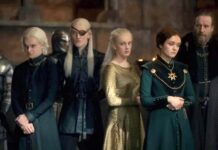
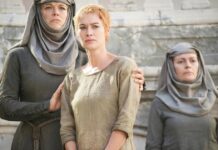
















![[Book Review] The Blade Itself (The First Law Trilogy) by Joe Abercrombie](https://bendthekneegot.com/wp-content/uploads/2018/01/1516047103_maxresdefault-218x150.jpg)








